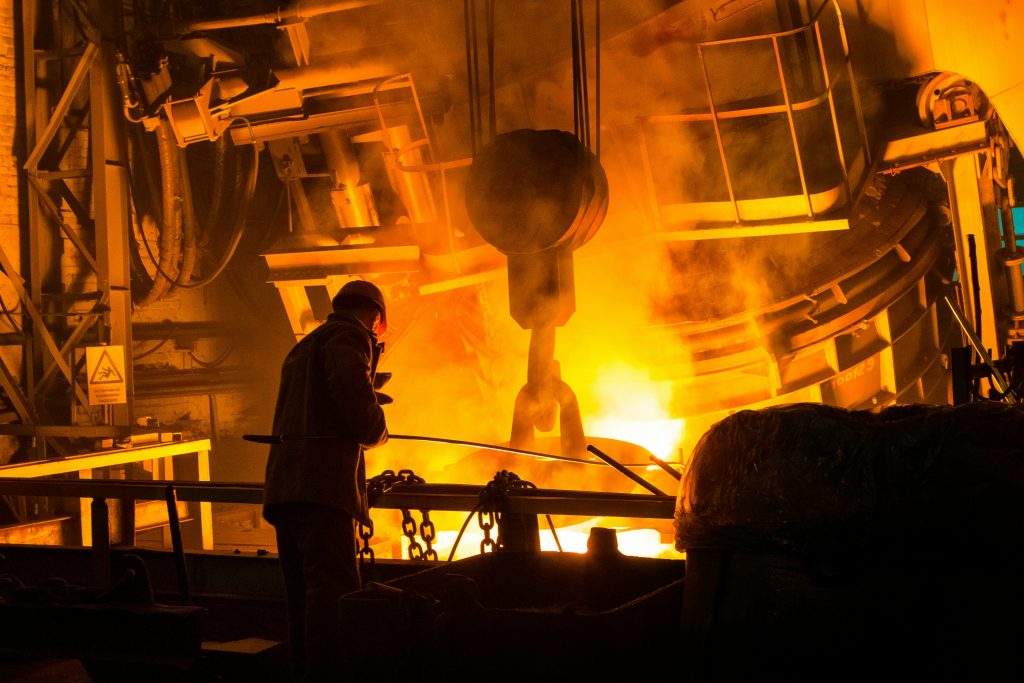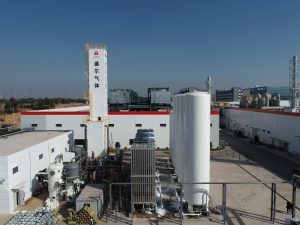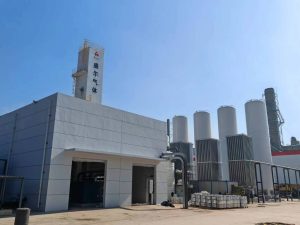Nitrogen, as an inert gas, plays a vital role in the metallurgical industry. Because nitrogen does not react with oxygen, it effectively prevents oxidation and decarburization of metal materials at high temperatures, making it widely used as a protective atmosphere. For example, nitrogen is commonly applied in the heat treatment of steel and non-ferrous metals — including bright annealing, quenching, and sintering — to maintain the integrity and surface quality of materials zh.kindle-tech.com <a href="https://www.gaspuscientific.com/?industry/50.html#:~:text=65%

Nitrogen generator with air separation equipment
To ensure a stable supply of nitrogen in the metallurgical process, nitrogen making machines and air separation equipment are very critical. Commonly used nitrogen production techniques are pressure swing adsorption (PSA) and membrane separation. Modern PSA nitrogen generators use carbon molecular sieves and two adsorption towers to efficiently separate nitrogen and oxygen in the air, usually producing high purity nitrogen in about 20 minutesgaspuscientific.com. Relative to traditional gas cylinder or liquid nitrogen methods, PSA nitrogen generators use air as raw material and only consume air compressor electrical energy, with low operating costs and high energy efficiencygaspuscientific.com. For large steel plants, the cryogenic air separation unit can produce larger flows of liquid nitrogen to meet the metallurgical process’s demand for oxygen, nitrogen, and argon zjseqt.com. In summary, with the improvement of nitrogen making machine and air separation equipment technology, nitrogen supply has become more automated and energy efficient, facilitating various metallurgical processes to achieve precise atmosphere control.
Converter steelmaking
In the converter steelmaking process, nitrogen has multiple uses. First, nitrogen is commonly used in compound nitrogen blowing operations at the top and bottom of the rotary furnace to stir the steel water to promote the uniform distribution of heat and accelerate the reaction. Nitrogen blowing into the steel water helps remove dissolved hydrogen, oxygen and other impurities, improving the cleanliness of the steel water gaspuscientific.com. In addition, the converter is prone to leakage in high-temperature environments, using nitrogen as a sealing gas can isolate the air and prevent oxygen intrusion from causing unwanted oxidation reactions gaspuscientific.com. In summary, nitrogen gas in rotary furnace smelting not only protects the gas, but also provides a physical action that contributes to the improvement of steelmaking efficiency and product quality.
Continuous casting protection
During the continuous casting process, the steel water surface is easily oxidized when exposed to air, which affects the quality of the continuous casting billet. At the same time, there will also be air infiltration at the contact between the steel pack to the middle pack. In continuous casting stations, inert gases (e.g., nitrogen or argon) are commonly used as protective gases to form an atmospheric protective layer to reduce oxide inclusion generation gaspuscientific.com. Especially during the initial pouring, nitrogen is charged to the steel pack or intermediate pack to establish a protective nitrogen atmosphere, which isolates the bare steel fluid from the air, thereby maintaining the steel fluid purity. Related studies indicate that after the adoption of protective casting, the amount of nitrogen increase in the steel is significantly reduced, the inclusions are controlled, and the quality of the continuous casting billet is improved. It can be said that the use of nitrogen in the continuous casting protection process is mainly atmospheric protection, thereby improving the steel water purity and continuous casting efficiency gaspuscientific.comzjseqt.com.
Annealing process
Annealing is a common heat treatment process in metalworking, primarily aimed at reducing hardness, relieving internal stress, and improving ductility. Because annealing occurs at high temperatures, the presence of oxygen can cause surface oxidation and decarburization. To avoid these issues, nitrogen is typically used as a protective gas to create an inert atmosphere zh.kindle-tech.com.
Related analysis notes that nitrogen during annealing can prevent oxidation and decarburization, maintaining surface brightness and integrity zh.kindle-tech.com.
Nitrogen’s inert protection is especially important and is widely adopted for the annealing of alloy steels and non-ferrous metals (e.g., bright annealing, neutral quenching). In addition, specialized processes such as powder-metallurgy sintering require a high-purity nitrogen atmosphere zh.kindle-tech.com gaspuscientific.com.
In summary, using nitrogen for annealing provides a low-cost and safe protective environment that ensures the parts meet performance and surface-quality requirements.
Inert atmosphere protection
Besides converters and continuous casting, nitrogen is also commonly used as an inert atmosphere in other metallurgical processes. Any process that involves heating metals or alloys and avoiding oxidation will typically use nitrogen as a protective atmosphere. For example, during metal smelting, forging, and heat treatment, high-purity nitrogen is introduced into the furnace chamber to isolate external oxygen and prevent oxide formation on hot surfaces. As defined by authoritative standards, a protective atmosphere heat treatment means introducing inert gases (mainly nitrogen) into a sealed furnace to prevent oxidation and decarburization of workpieces during heating. In practice, nitrogen is sometimes mixed with hydrogen or other gases to form reducing or neutral atmospheres, depending on the desired metallurgical properties. In short, inert nitrogen atmosphere protection is a fundamental step in many metallurgical operations and is crucial for improving product quality and consistency.
Powder Metallurgy
In the powder metallurgy process, metal powders must be sintered at high temperatures, and preventing oxidation while ensuring density is essential. Nitrogen is commonly used as a protective atmosphere during sintering to prevent steel powders from reacting with oxides, thus ensuring the mechanical properties of the final products. At the same time, nitrogen also plays an important role in controlling the sintering atmosphere, maintaining the stability of the furnace atmosphere to achieve uniform properties in powder metallurgy products zh.kindle-tech.comgaspuscientific.com。 Moreover, when sintering high-carbon steel or magnetic materials, a high-purity nitrogen atmosphere is also required to prevent oxidation
Future Trends and Outlook
With the advancement of technology, the application of nitrogen in metallurgy continues to evolve. On one hand, nitrogen generation technologies are developing toward greater intelligence and energy efficiency. PSA nitrogen generators operate through automated control systems, with energy consumption mainly coming from the air compressor, making them low-cost and highly efficient gaspuscientific.com。 On the other hand, in line with the concept of Industry 4.0, nitrogen supply systems can now achieve online monitoring and remote optimization, ensuring that metallurgical production lines receive a stable supply of high-purity nitrogen. Furthermore, in response to the demand for green manufacturing, emerging technologies are beginning to integrate nitrogen with other inert or controllable gases to form composite protective atmospheres, enhancing processing efficiency and reducing energy consumption. Overall, new materials, processes, and automation control solutions are continually emerging in metallurgical gas applications, making the role of nitrogen in the steel and advanced materials industries increasingly diversified and precise.



